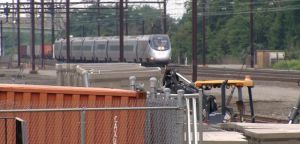Hello Kitty is not a cat, the company behind Japan’s global icon of cute insisted, despite an uproar from Internet users who spluttered: “But she’s got whiskers!”
When is a cat not a cat? When it’s Hello Kitty, apparently.
We’re not really sure how to feel about this revelation. Clearly this character has cat ears and whiskers, but it has just come to light that Hello Kitty is in fact a British schoolgirl in the third grade.
The moon-faced creation that adorns everything from pencil cases to pyjamas the world over is, in fact, human.
“Hello Kitty” is a cheerful and happy little girl with a heart of gold,” brand owner Sanrio says on its website.
The shocking revelation came to light when a Hawaii-based academic specialising in the epitome of “kawaii” (“cute” in Japanese) asked Sanrio to fact-check captions for an exhibition she was curating to mark the 40th anniversary of Hello Kitty
Christine Yano, an anthropologist from the University of Hawaii, told the Los Angeles Times that she “was corrected — very firmly” by Sanrio that Kitty was not a cat.
“That’s one correction Sanrio made for my script for the show,” the paper quoted her as saying.
“Hello Kitty” is not a cat. She’s a cartoon character. She is a little girl. She is a friend. But she is not a cat. She’s never depicted on all fours. She walks and sits like a two-legged creature.”
And indeed, an AFP enquiry as to the status — feline or otherwise — of one of Japan’s most famous exports confirmed her non-cat identity.
“It is a 100-percent personified character,” a Sanrio spokesman told AFP in Tokyo. “The design takes the motif of a cat, but there is no element of a cat in Hello Kitty’s setting.”
Her life story has always been there, the spokesman said, adding the personification is meant to make her fans feel closer to the character “as a friend”.
Web users were agog at the news.
“Hello Kitty is not actually a cat. MIND BLOWN”, tweeted @killedbydying
“‘Sanrio confirms that Hello Kitty is NOT a cat.’ One of the many reasons why I have trust issues”, wrote @eisakuivan
“So Hello Kitty isn’t a cat? Everything I know is a lie,” said @nymbc
Asked about the worldwide reaction to the shock revelation that Hello Kitty is not a cat, the Sanrio spokesman offered: “I don’t think anyone in Japan found it surprising.”
“There is an explanation we have made the whole time, and I think that’s how people have understood it.”
A straw poll of Japanese people within the AFP Tokyo bureau found that not to be the case, however.
The Sanrio spokesman explained that Kitty and her family were given no specific nationality but were designed to be living in Britain, because many girls in Japan had strong admiration for the Western lifestyle in the 1970s.
Ever since the mouthless white character first appeared in 1974 on a coin purse in Japan, she has graced tens of thousands of products, from handbags to aircraft, in some 130 countries.
But just remember: she’s not a cat.
Now, let’s stand up for real cats. How would you like it if you were a cat and people kept telling you you looked like a third-grade kid? Cats are such wonderful animals.
Unfortunately, not all cats are so lucky and get adopted by third graders with no mouth. Many need help and good shelters are slim.
Let’s all get together and help a good shelter:
Let’s help Refuge les Chamours in Ste-Béatrix, Quebec
On the internet, go to www.chamours.ws you can click on the PayPal button or on “faire un donne”
Easy to give to them. Don’t need to know a word of French.
Mail instead?
Refuge les Chamours 100 de la Colline Ste-Béatrix, J0K1Y0
Québec, Canada


























